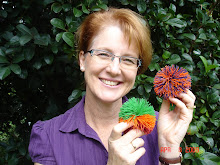- Try to give each instruction clearly and simply.
- The class echoes your words and mirrors any hand movement. (Even if this as simple as touching the first finger with the first instruction, second finger second instruction. )
- Continue through the sequence.
- Review the instructions in reverse order using same words and actions.
- Try the review out of order, still using same words and actions.
- Suggest to the children that now they can use their remembering hand in the same method at home in order to remember the message. (It does work!)
This would be my favourite way of reviewing a day with a class. We all laugh when I tell them that when Mum & Dad ask what was the best thing you did doing the day, they are not allowed to say LUNCH! It is usually quite interesting to see how much you really did do in the school day and to review the activities in time sequence. This is a very valuable tool for the student to develop in later years....one of reflection and review. Once the students have refreshed their memory of the day I often ask them to give me "a high five" as they file out the door and tell me their personal best thing for the day. The responses make for excellent reflection and evaluation for me as the teacher. The children love it too, as everyone gets to have a say!
Blessings for the journey,
Live,laugh and learn,
Carmel
